1600 - 1700
- The university officially opens (23 augustus 1614)
- The Broerstraat: heart of the city (1614)
- Attracting students in 1614 (1614)
- Science in accordance with God's word (1618)
- The Broerstraat anno 1643 (1643)
- New start anatomical theatre (1654)
- Voluntary Student Company (1672)
- Johann Bernoulli (1695)
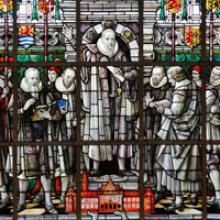
23 August 1614: The university officially opens
On the 23rd of August the university of Groningen, founded by the council of the province Groningen and the Ommelanden, was officially opened. The university started with six professors for the faculties Theology, Law, Medicine, and the Free arts. The opening festivities covered three entire days. On the first day, a banquet was held that continued in the depths of the night. Numerous toasts were proposed and there was a ‘variety of delicacies’. In addition to the banquet, a parade was held through the city and various speeches were delivered.

1614: The Broerstraat: heart of the university
The brand new academy was housed in the old and unused Menolda and Sywen convent, on the North side of the Broerstraat, where, 400 years later, the Academy building is still situated (even though in a different building). The lecture rooms, senate chamber, and the houses of the professors were situated in the convent. The University Library and Anatomy Theatre were housed in the Minderbroeder Cloister across the street from the Academy building. The courtyard of the cloister was later being used as an academic cemetery.
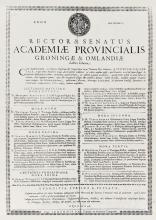
1614: Attracting students in 1614
Just like today, the university put a lot of effort into attracting students in 1614. She offered scholarships to convince foreign students to come study in Groningen. Another way to recruit new students was to appoint famous professors. Universities strived with each other and tried to offer the highest salaries to attract the best professors. Posters of course schedules of these professors were created and spreaded throughout Europe. This seemed to work for Groningen, because in the first year of study 82 students enrolled; out of which thirty foreigners!
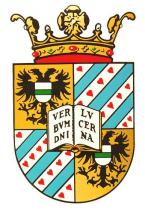
1618: Science in accordance with God's word
Ever since the founding of the university in 1614, faith was considered of paramount importance and, therefore, a respectable Calvinistic pastors education was a ‘must’. The university asked the well-known theologian Franciscus Gomarus to occupy a professorship in theology. However, Gomarus was in the middle of a conflict with his colleague Jacobus Arminius about the issue of predestination. As the representative of the counter remonstrants, or the ‘precise’, Gomarus believed that humans were predestined and that the choice of whether you would go to heaven was already determined by God before you was born. The ‘precise’ left no room for the idea of the reformants, or ‘flexibles’, that humans could influence their change to go to heaven by making their own choices and doing good deeds. In 1619, the conflict ended when the Dordtse Synode, an ecclesiastical council of theologians, decided in Gomarus’ favour. Just before, in 1618, Gomarus had accepted the position of Professor of Theology and Hebrew at the university. From this moment onwards, the university began to steer a clear, ‘precise’ course. Education and science were based on pure Protestantism. Even though this doctrine has been discarded a long time ago, it still lives on in the coat of arms of the university, where it says: 'Verbum Lucerna': The word of the Lord is a light for our feet.
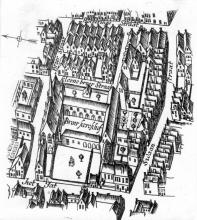
27 March 1643: The Broerstraat anno 1643
Thanks to the phenomenal maps of Egbert Haubois we can take a peek into 17th century Groningen. The cropped picture on the left shows the old Academy Building at the left side. In the middle, where the University Library is currently situated, you’ll find the old church de Broerkerk. The complete map can be found in the Groningen Archives.
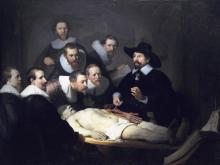
1654: New start anatomical theatre
The derelict and disused 'anatomical theatre', since 1615 based near the Broerkerk, witnesses a revival since its decay in 1630. There is, however, a shortage of bodies to perform autopsies on. This is because of the still-dominant aversion against autopsies, and also because executions, another source of bodies, were minimal. To save the anatomical lessons, Henricus Eyssonius, doctoral student of Antonius Deusing, constructs a plan to combine nursing practices with education. In this way, the bodies of the died patiënts can be used for autopsies in the anatomical lesson. Due to political obstinacy this plan was never pursued. Nonetheless, the idea to combine care with education ultimately resulted in the forerunner of the Groningen medical curriculum.
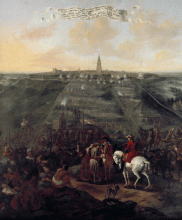
1672: The Voluntary Student Compagny
They’d rather fight than stand guard; if the latter, then on the most dangerous spots. In 1672, during the siege of Groningen, 150 students organised themselves in the Vrijwillige Studenten Compagnie (voluntary student company). The Company was founded during the first attack of Christoph Bernhard von Galen, the bishop of Munster. In the Netherlands he is also known as Bommen Berend (Bernhard Bombs), because he used a lot of bombs in the process of laying siege to the city. General Rabenhaupt, who led the defence of the city, picked out the most suitable students to help him fight the bishop’s soldiers. One student got shot in the chest, but luckily survived the assault. After the war all volunteers got a silver medal from the headmaster. The standard of the company is still on display in the University Museum. 'Deo, Patriae et Academiae' it says: For God, Country and Academy.
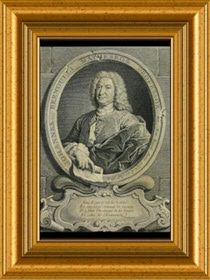
1695: Johann Bernoulli
After a period of 25 years, the university could offer a professorship in mathematics. In 1695, the famous Swiss mathematician Bernoulli came to Groningen. He was one of the greatest mathematicians of Europe in his time. Bernoulli developed a theory based on mathematics and physics, which displayed the fastest way of movement between two points. This theory, called the brachistochrone problem, was a real breakthrough in mathematics. Today, Bernoulli's theory is immortalized as a sculpture, which you can admire at the Zernike campus.
| Last modified: | 08 October 2021 4.39 p.m. |
More news
-
16 April 2024
UG signs Barcelona Declaration on Open Research Information
In a significant stride toward advancing responsible research assessment and open science, the University of Groningen has officially signed the Barcelona Declaration on Open Research Information.
-
02 April 2024
Flying on wood dust
Every two weeks, UG Makers puts the spotlight on a researcher who has created something tangible, ranging from homemade measuring equipment for academic research to small or larger products that can change our daily lives. That is how UG...
-
18 March 2024
VentureLab North helps researchers to develop succesful startups
It has happened to many researchers. While working, you suddenly ask yourself: would this not be incredibly useful for people outside of my own research discipline? There are many ways to share the results of your research. For example, think of a...

